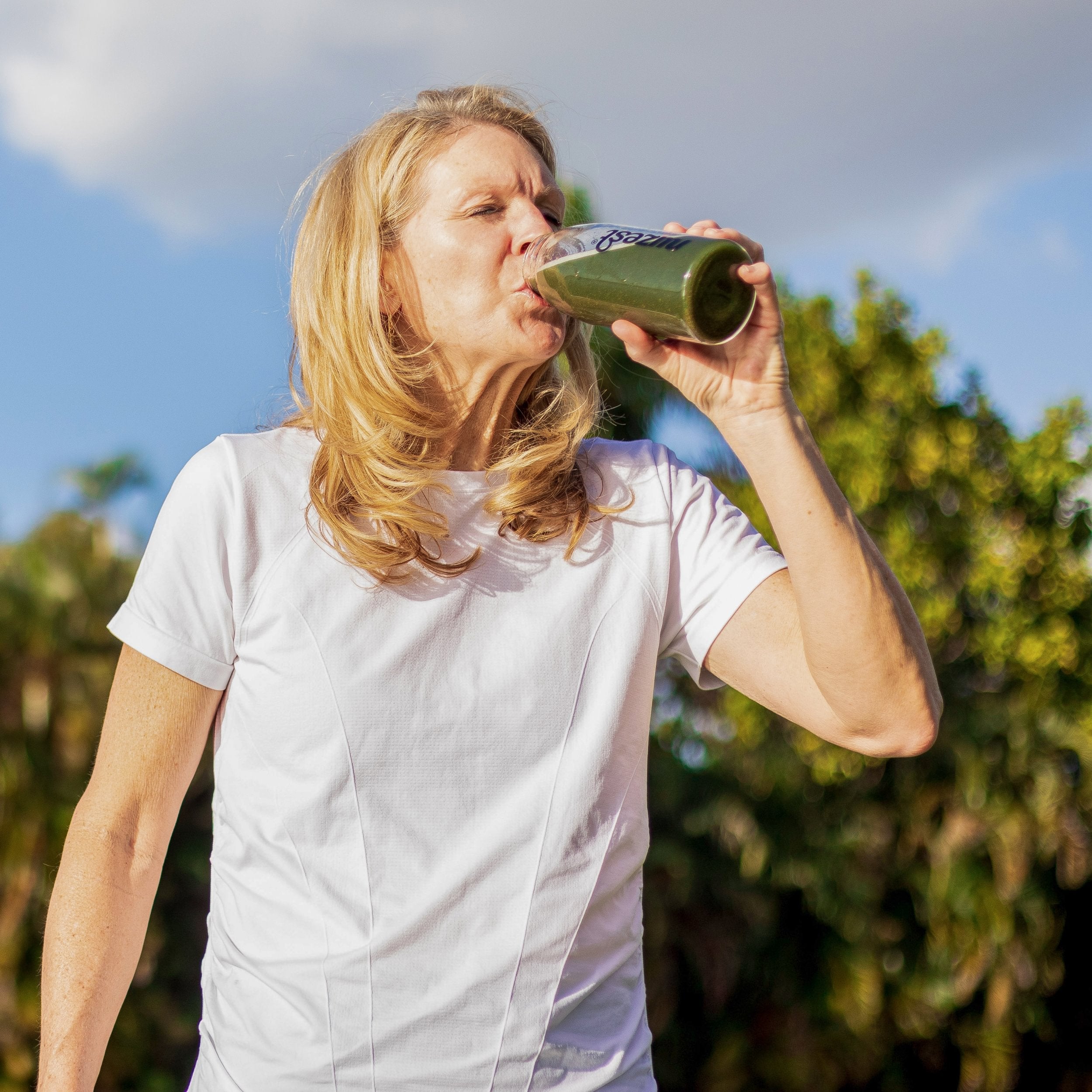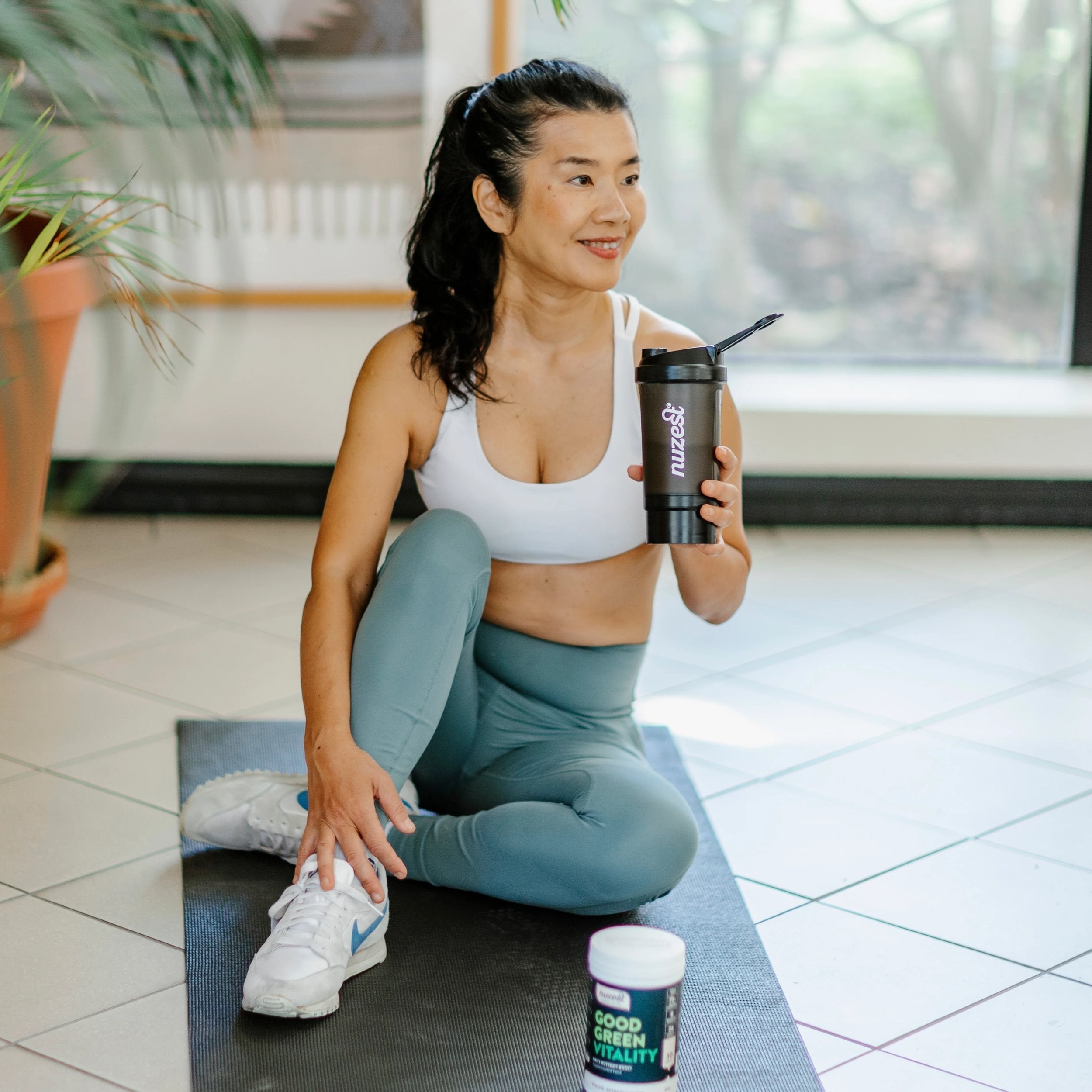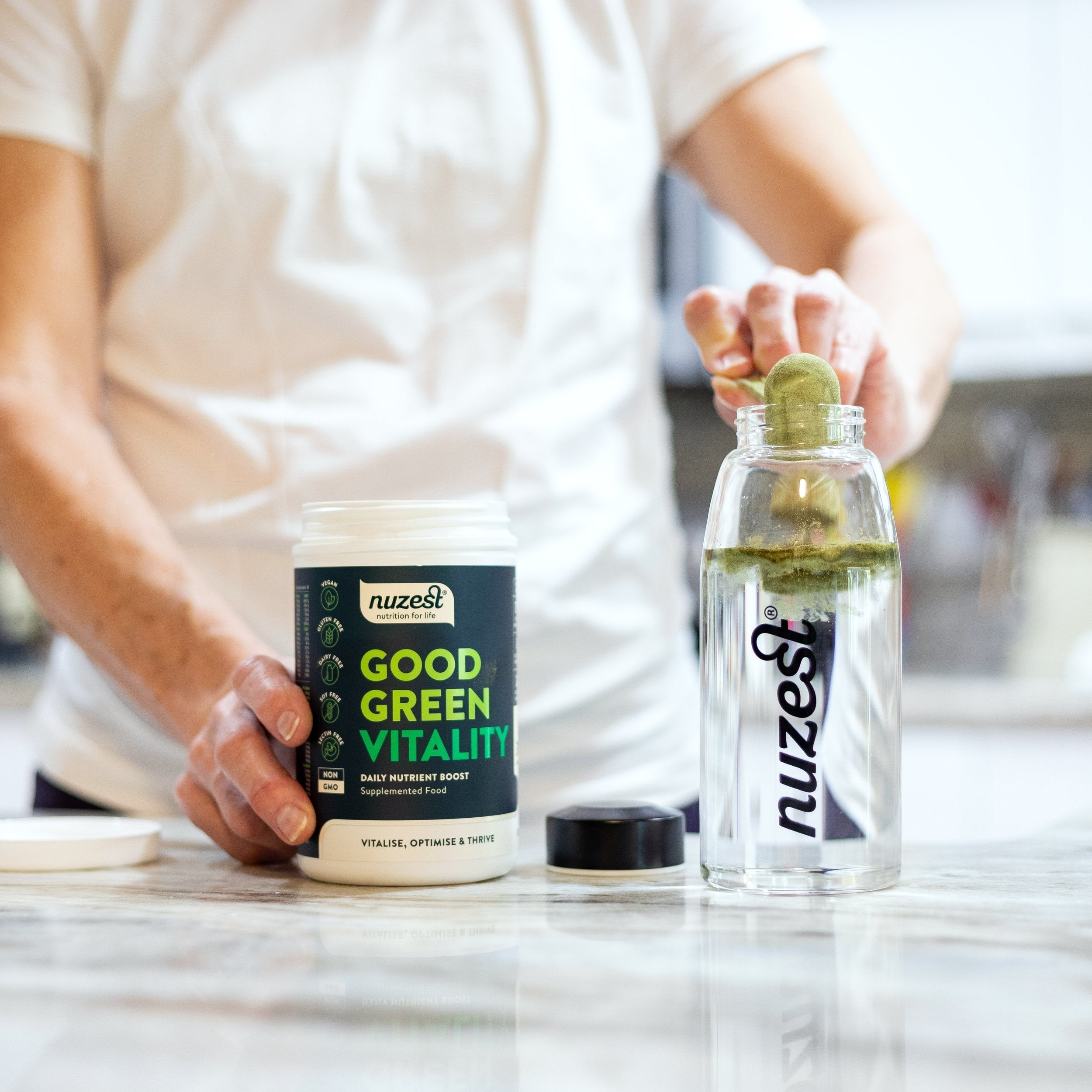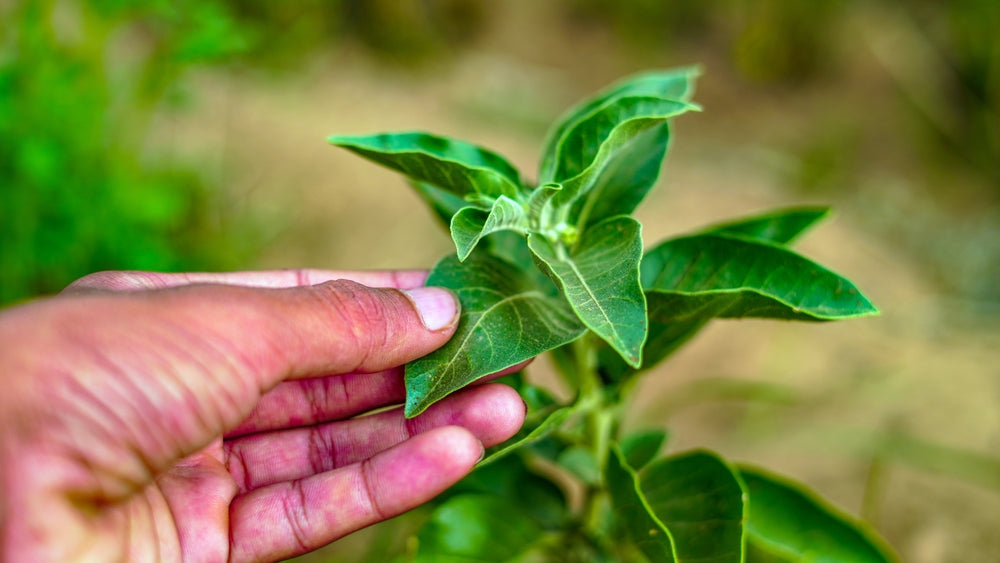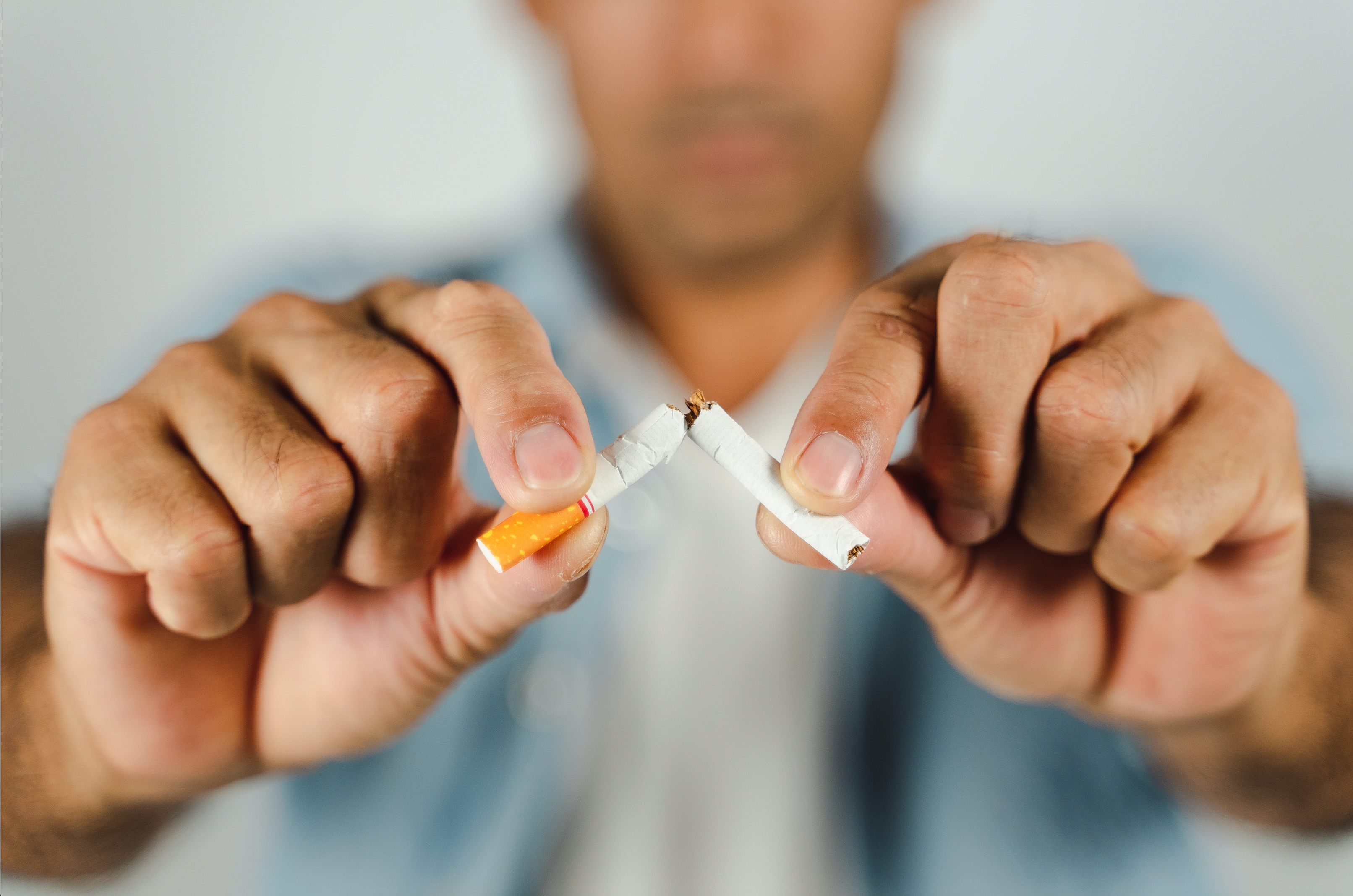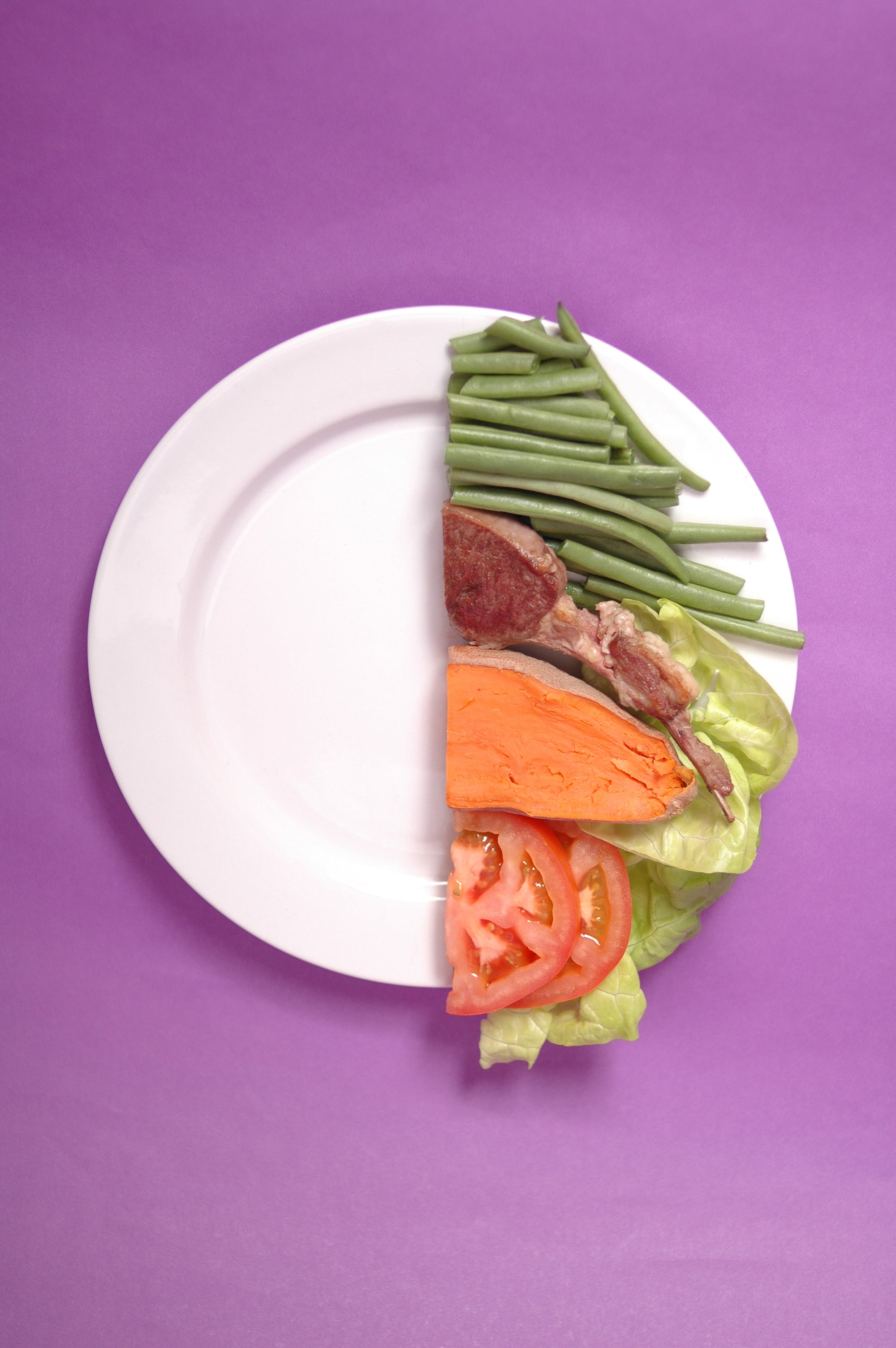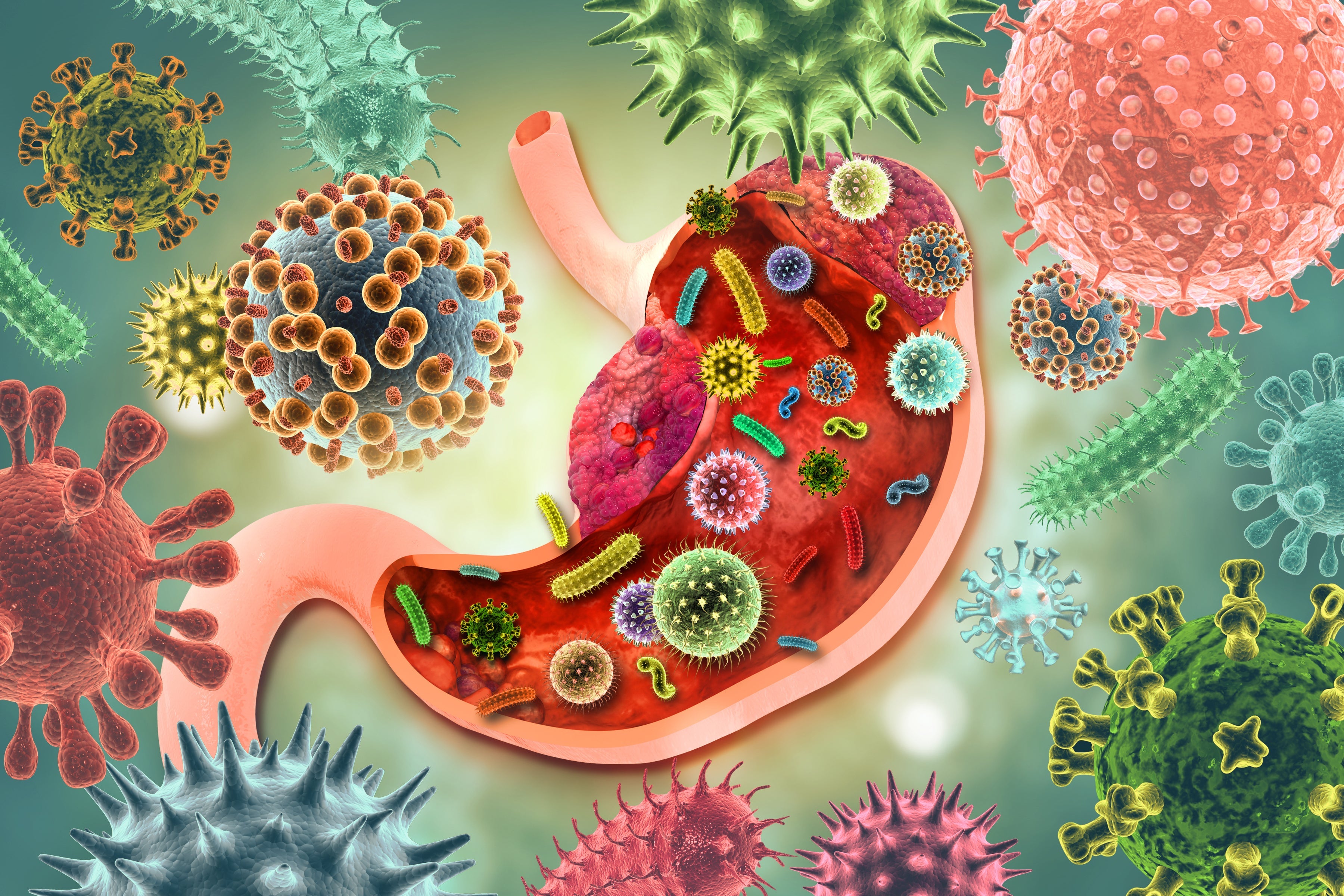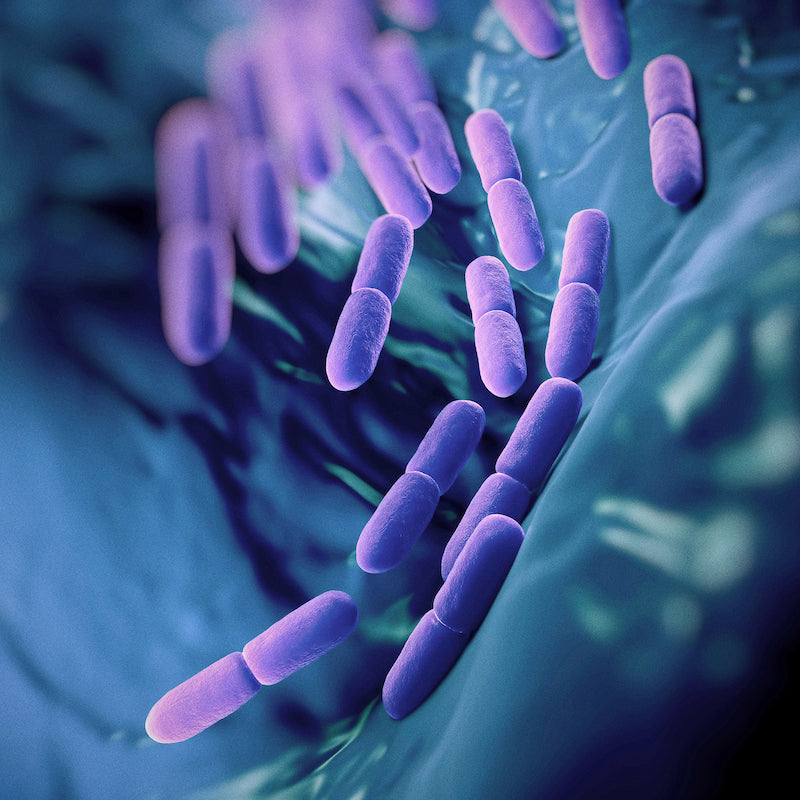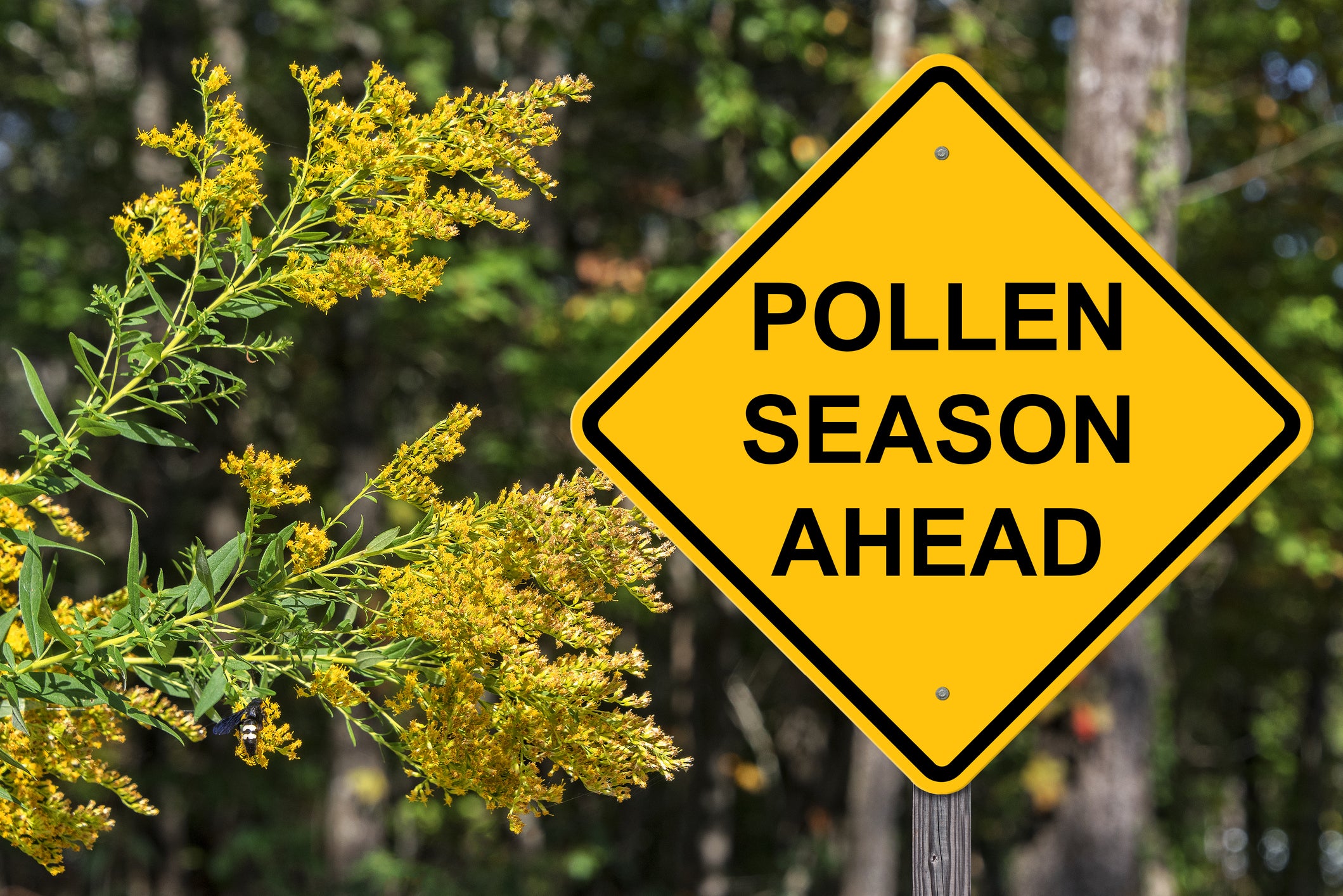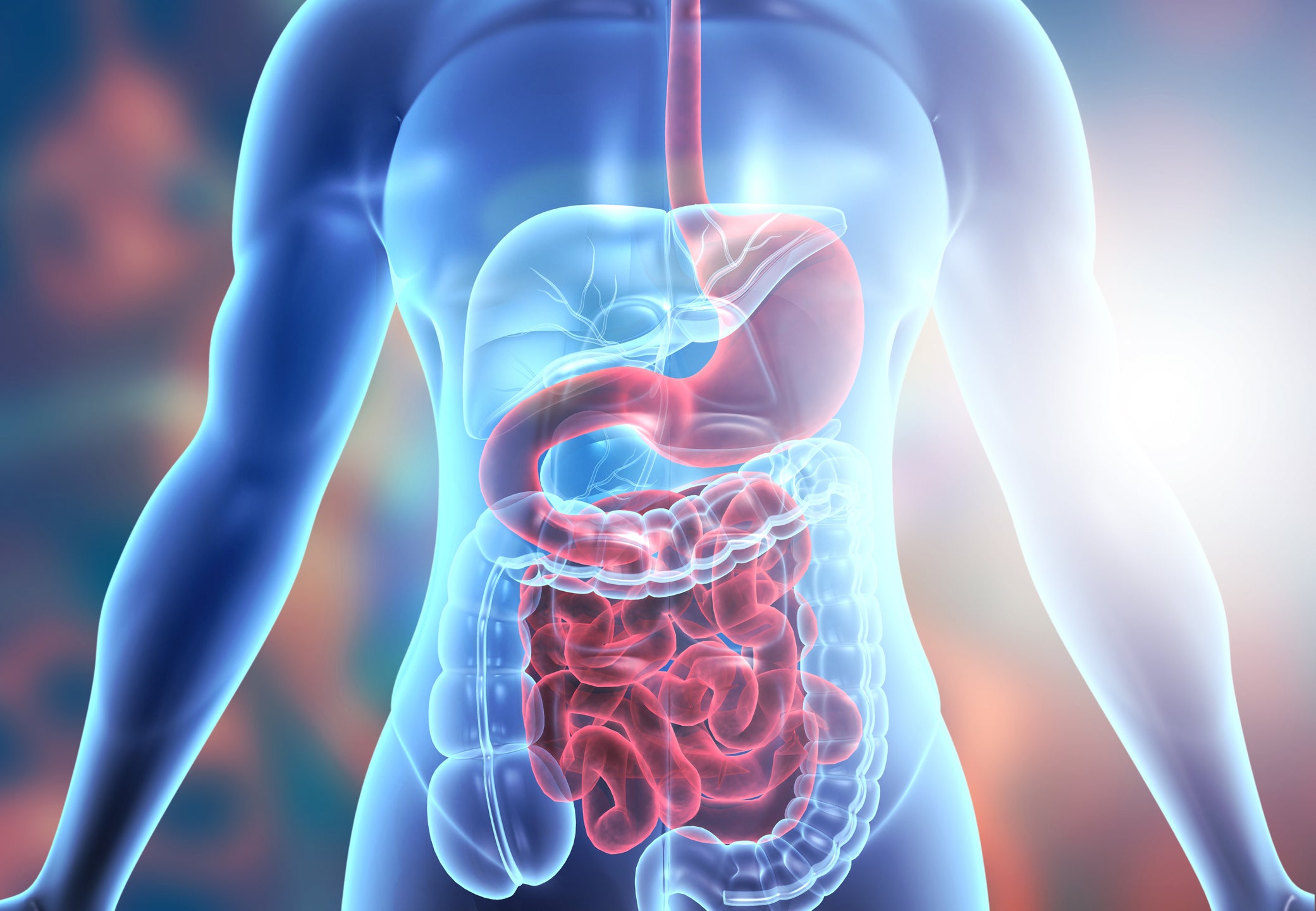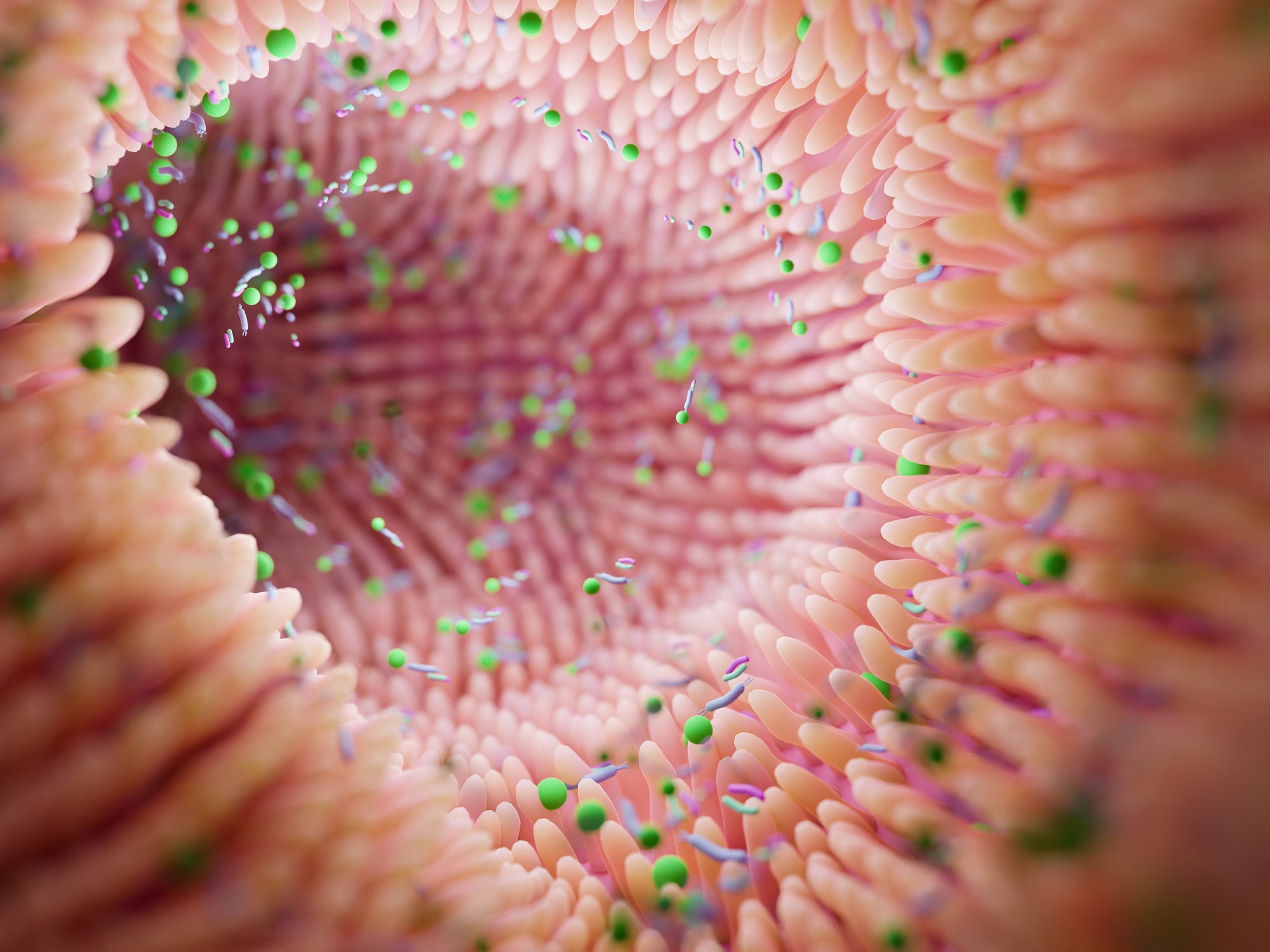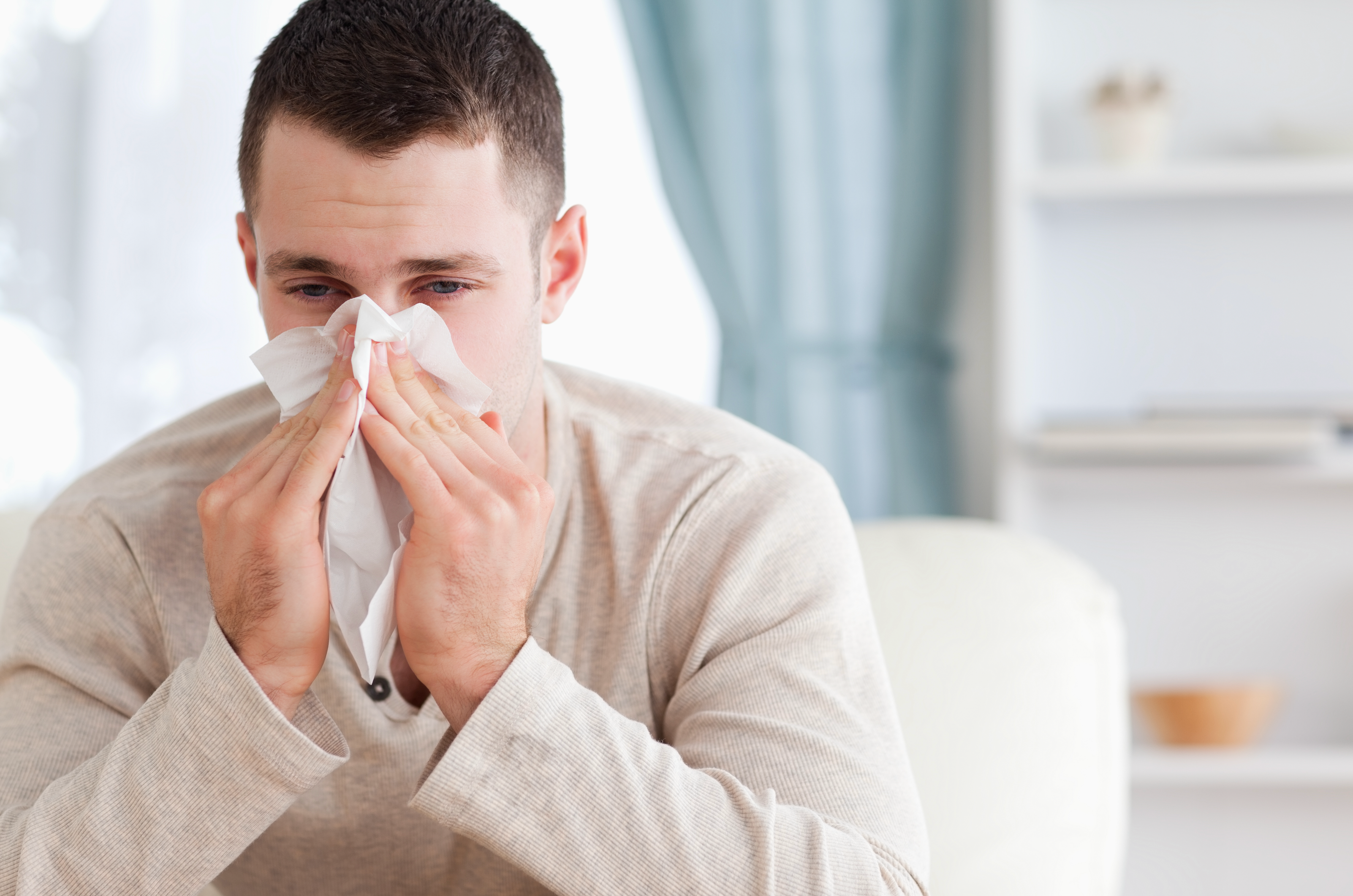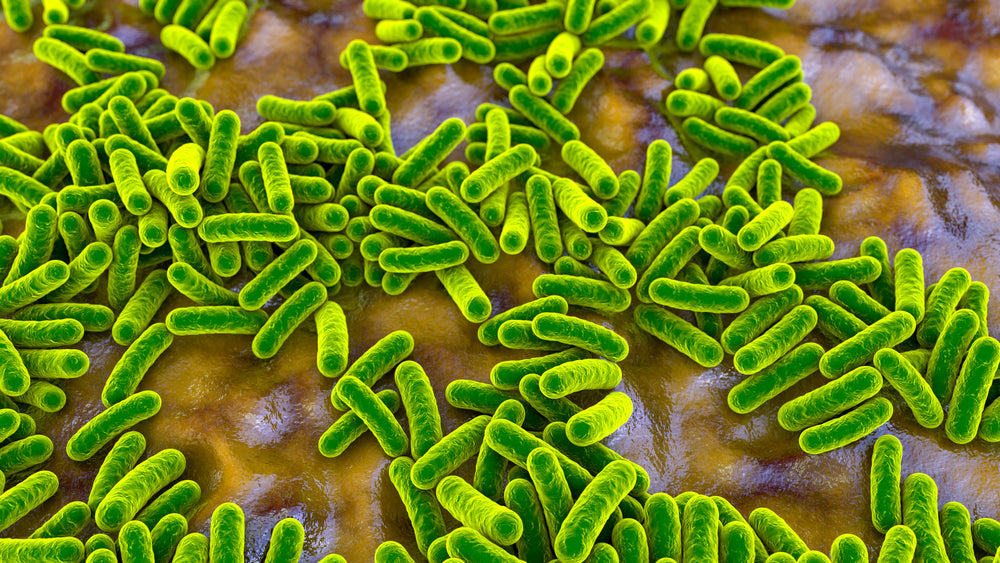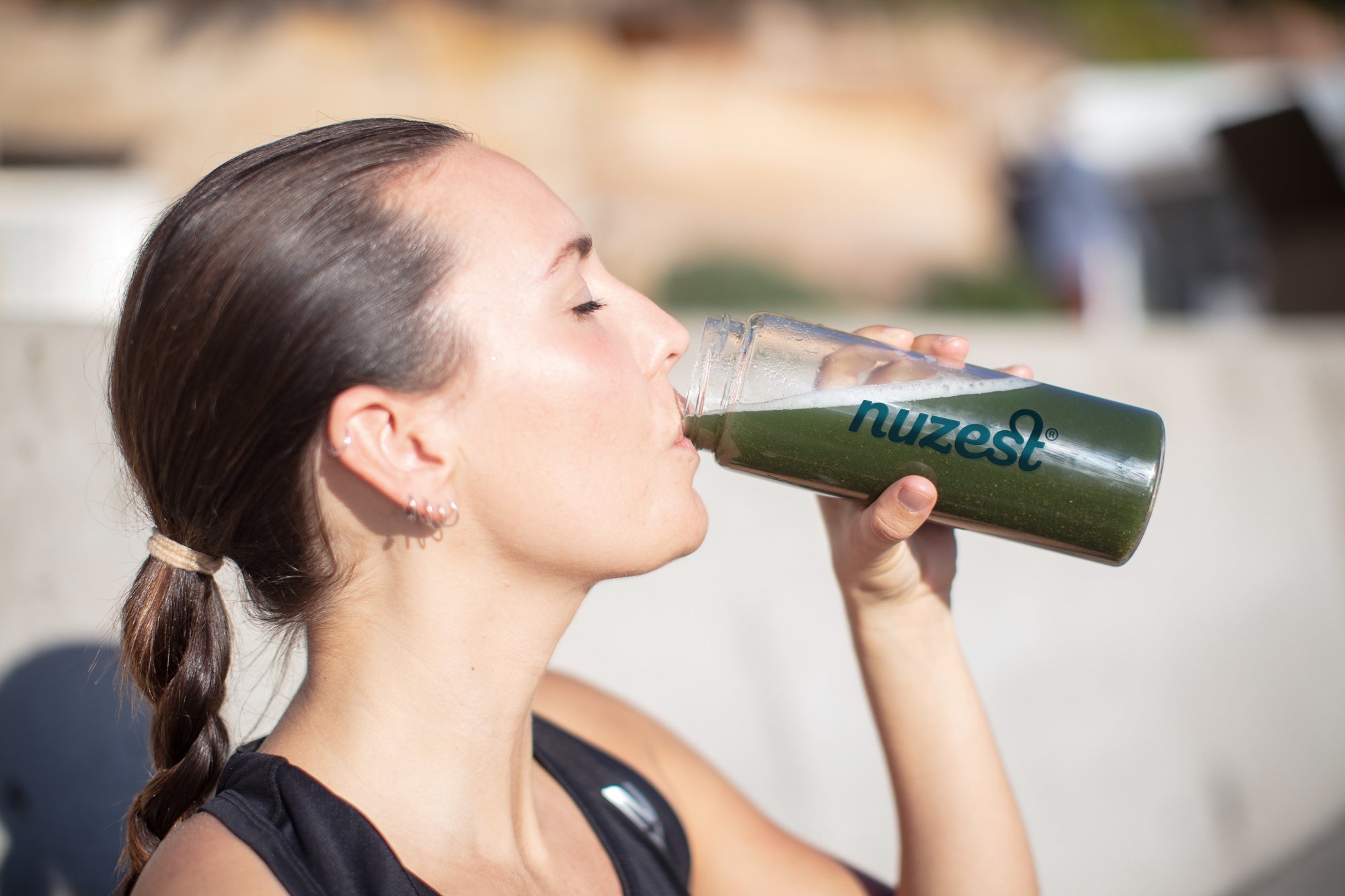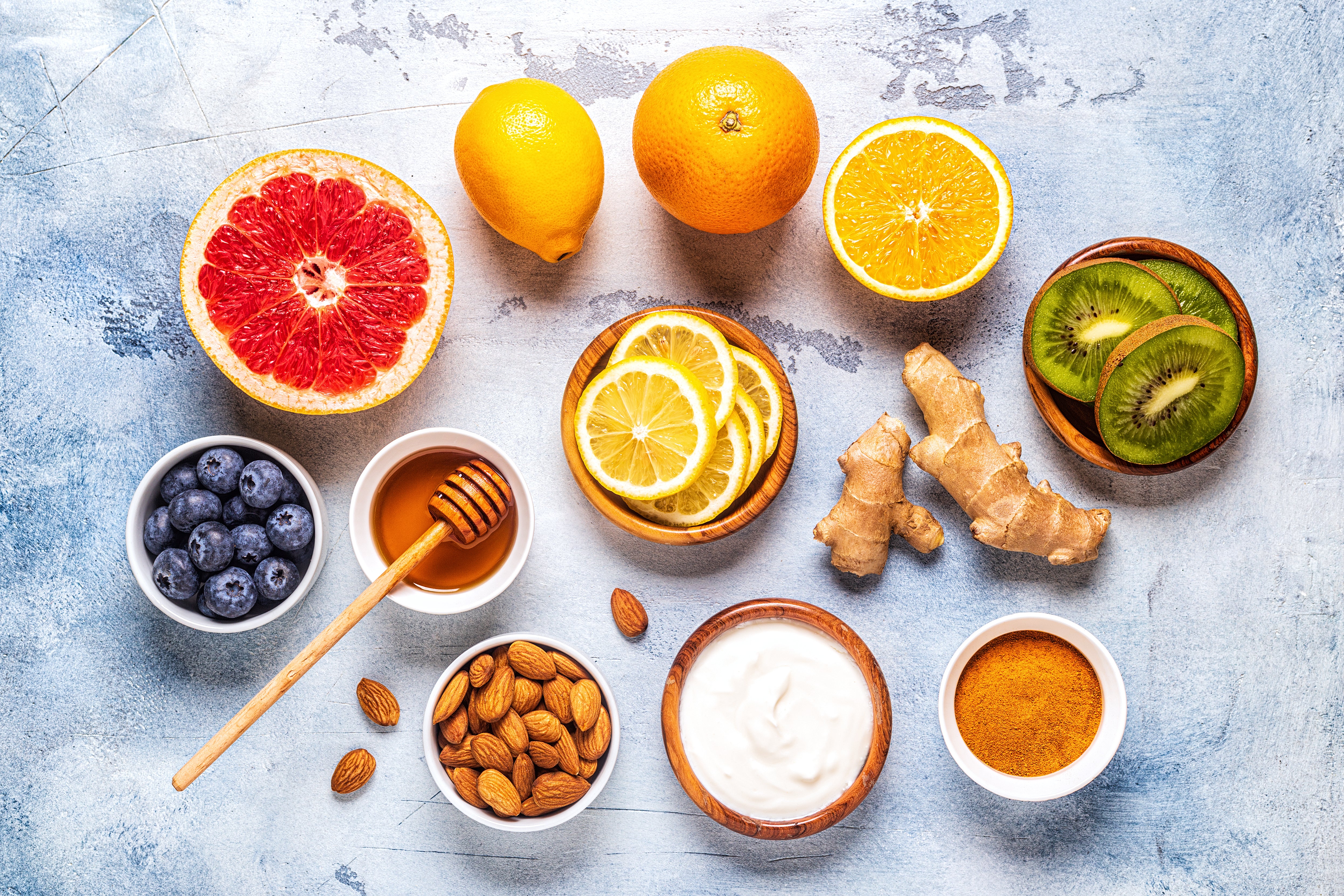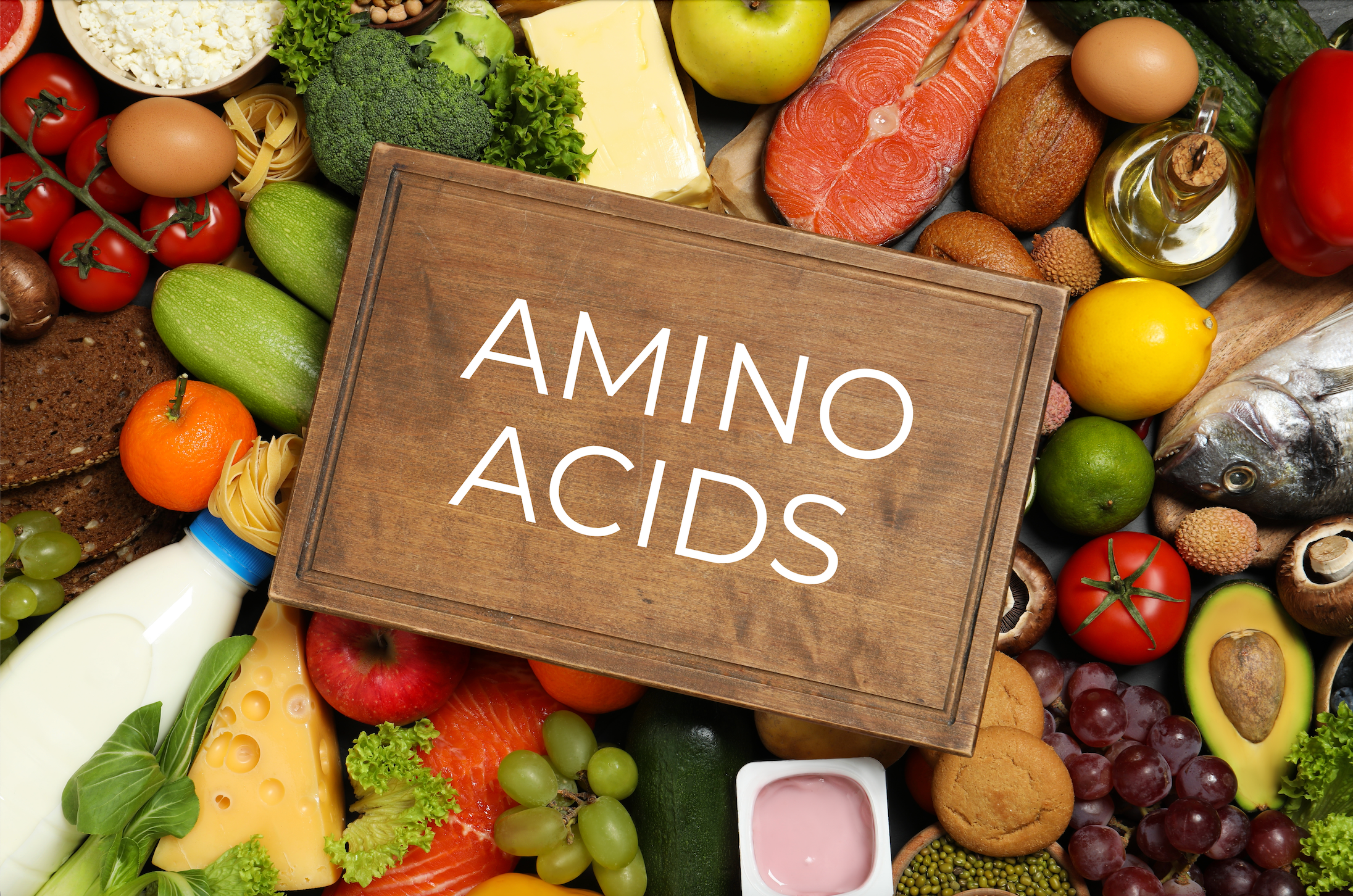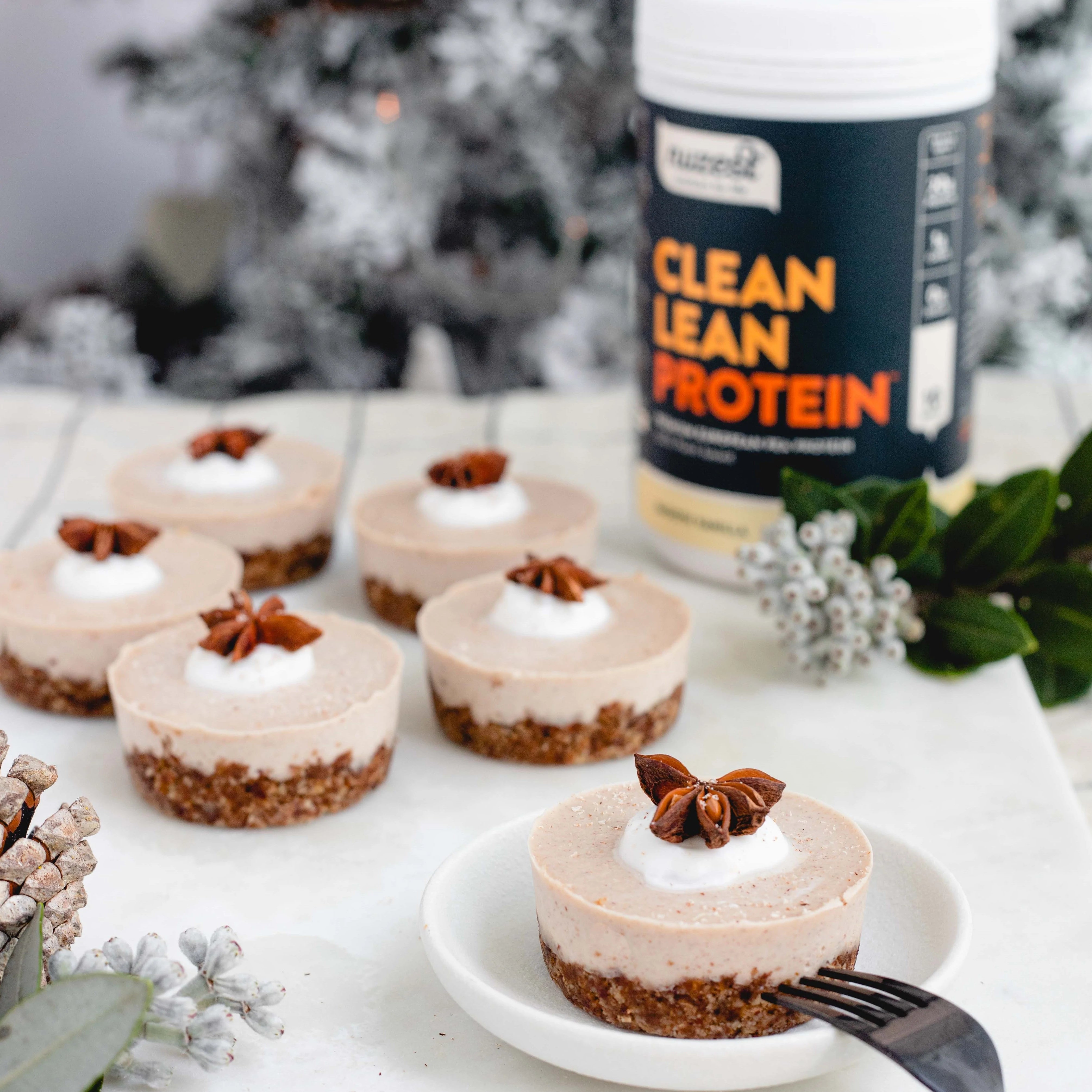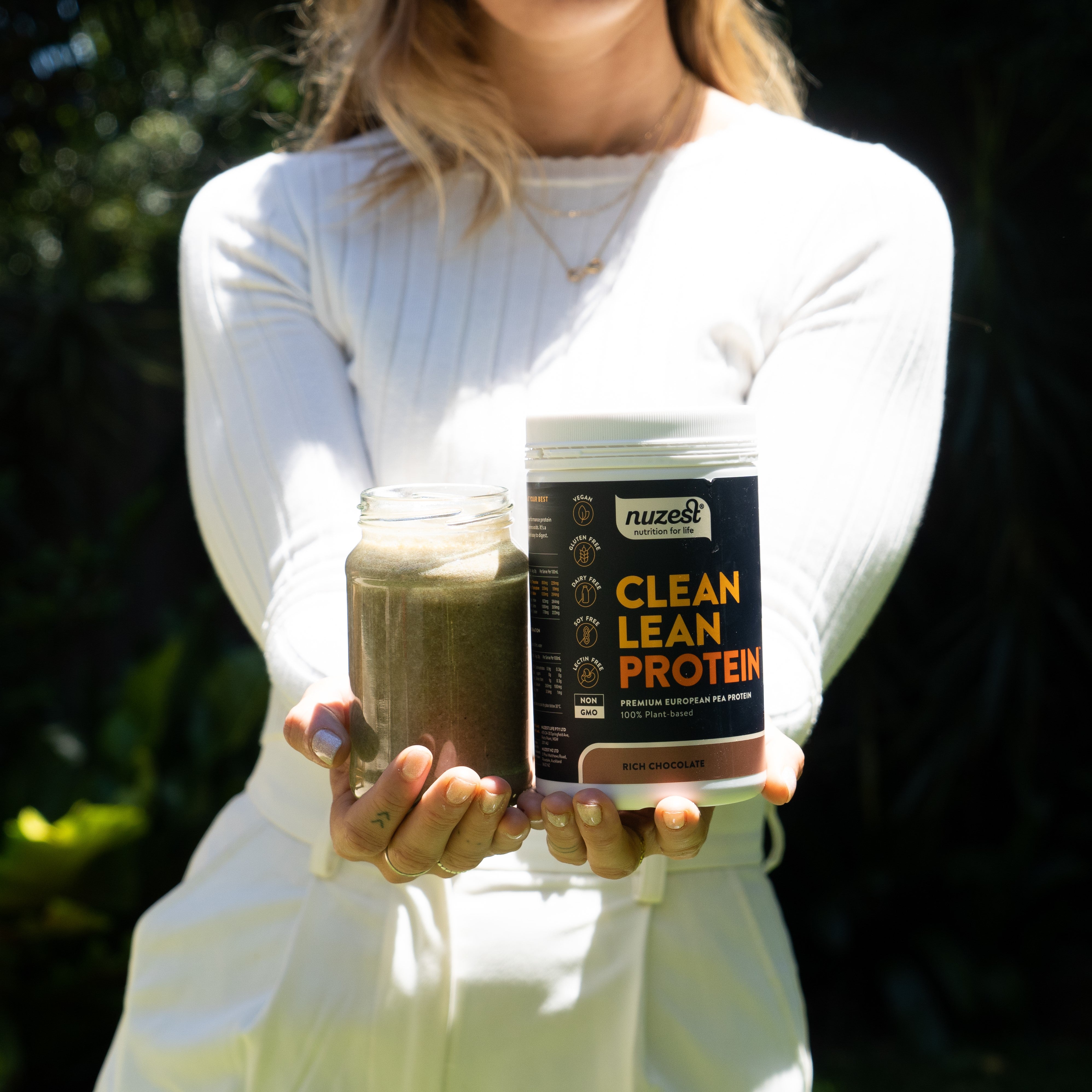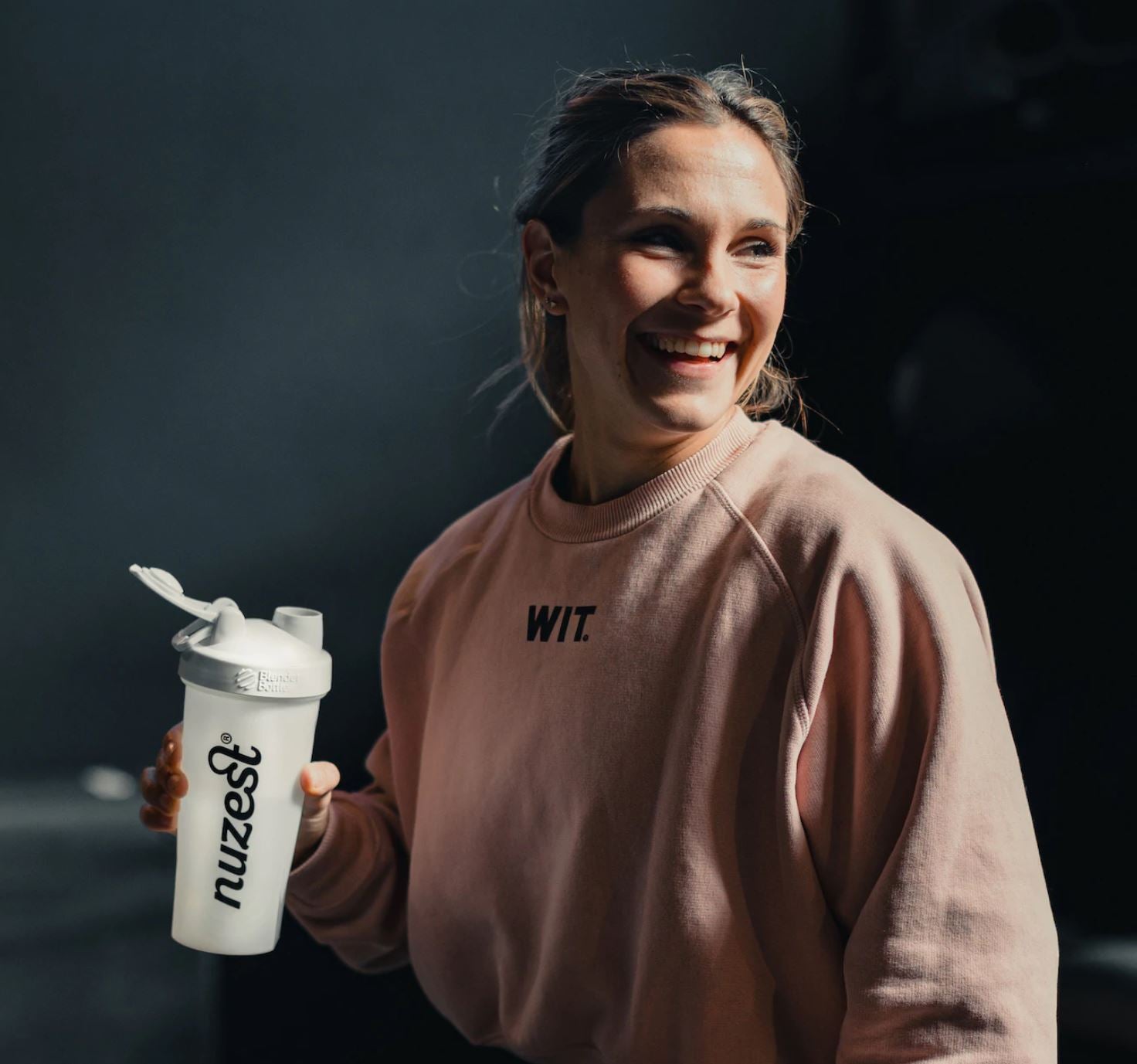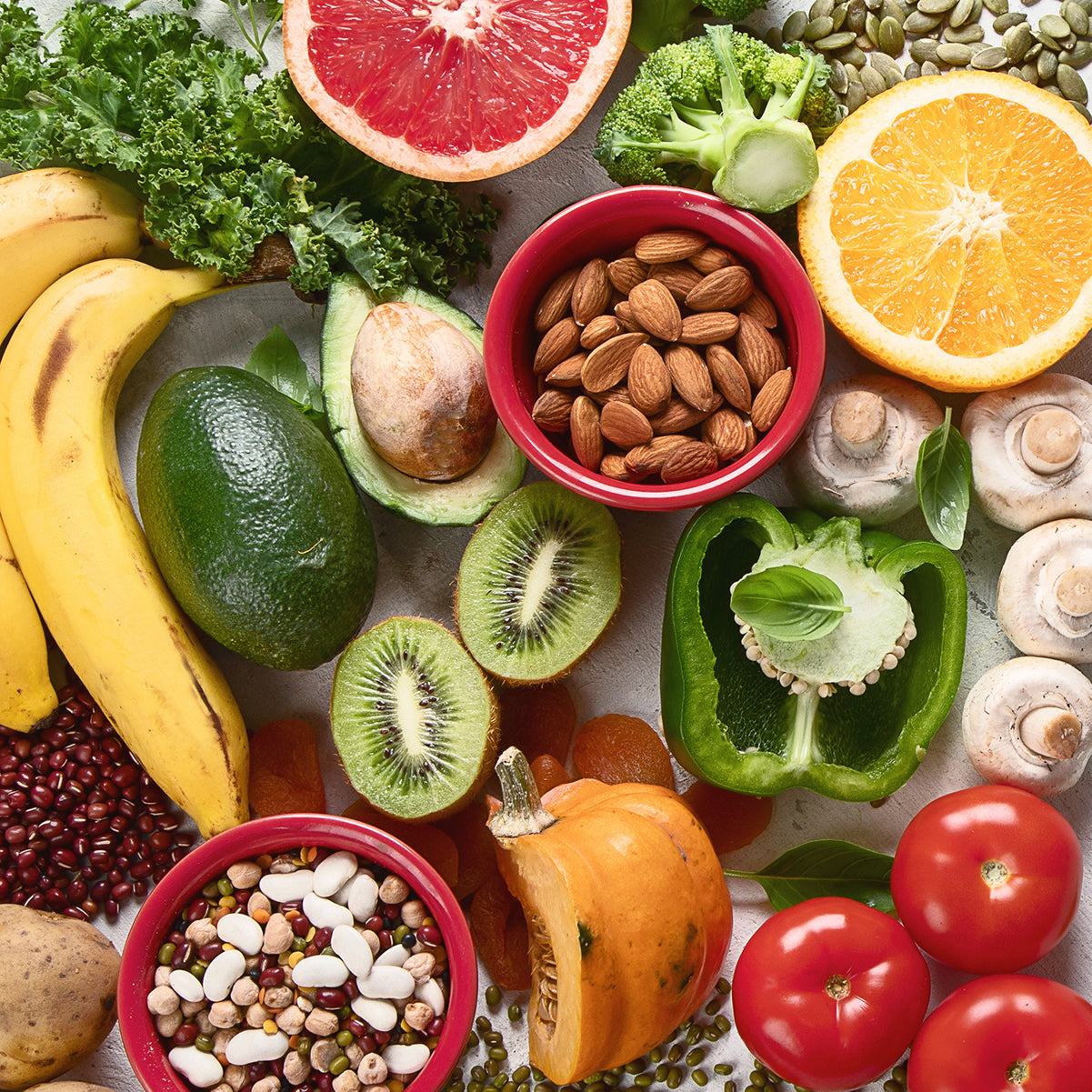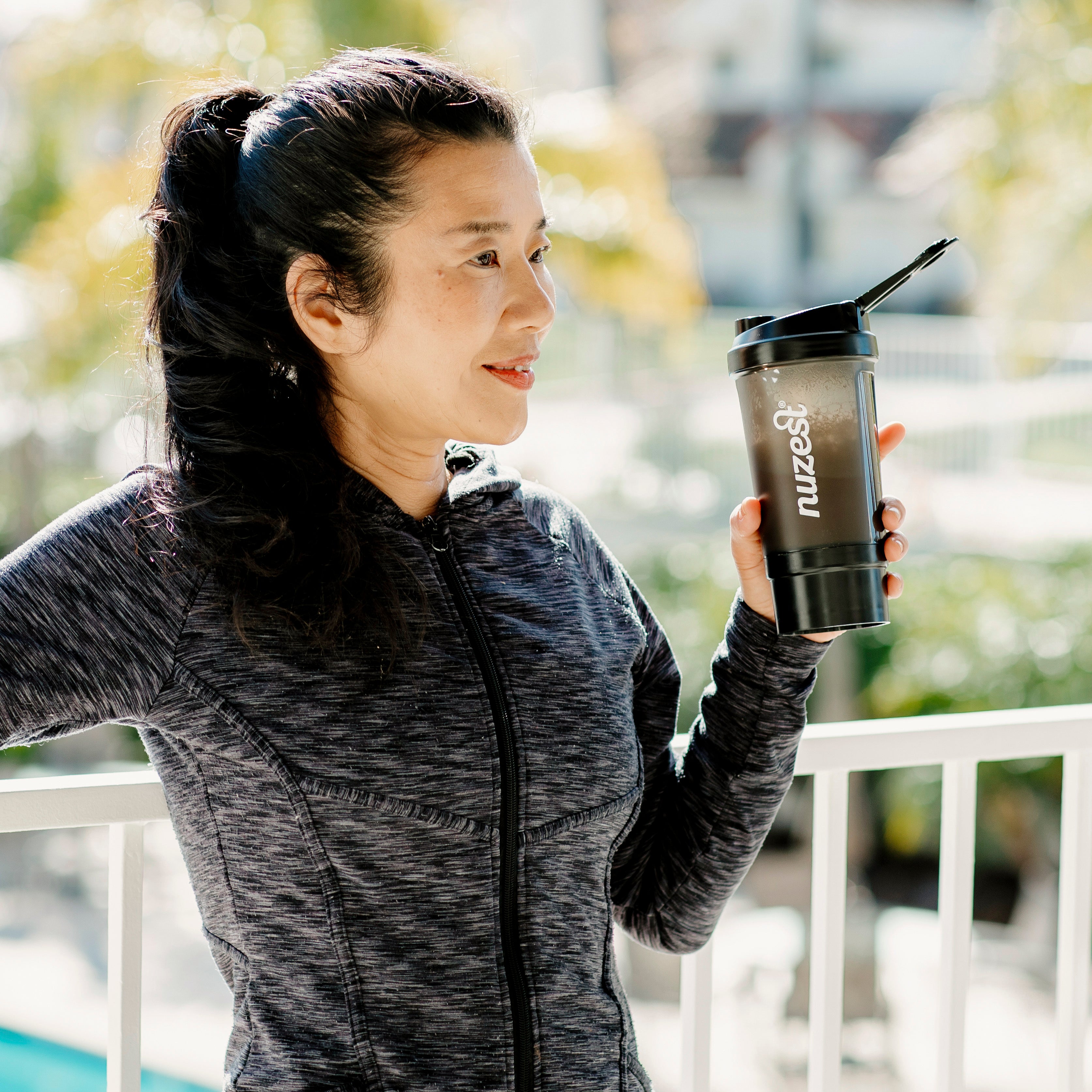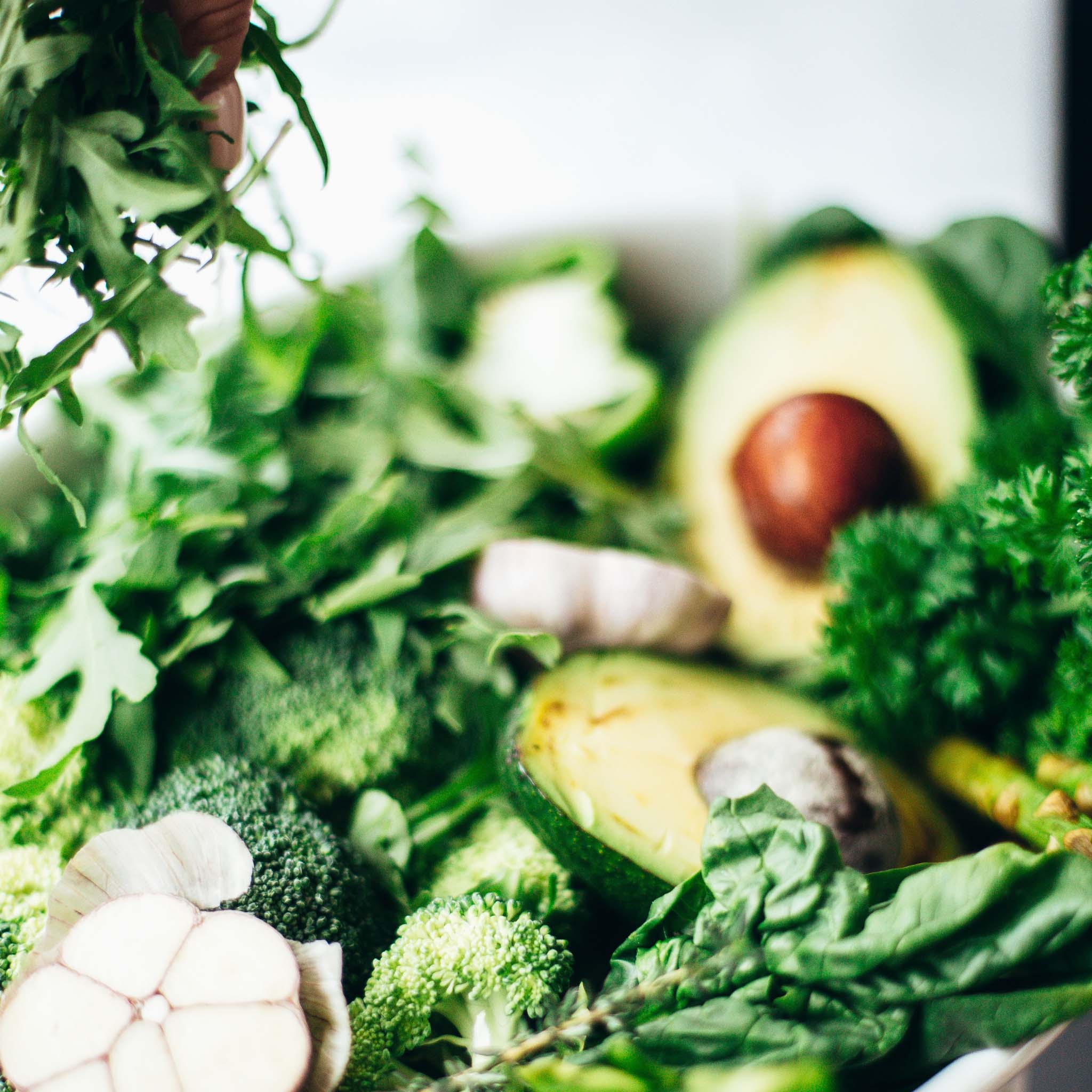Author: Megan Jones (Adv.Dip.NutMed, BHsc.NutMed)
Menopause may be a natural process, but the myriad of changes it brings can often feel far from ordinary. By definition, it marks the end of a woman’s reproductive years, characterised by the permanent cessation of menstruation - typically diagnosed 12 months after the final period.[1] This shift occurs due to a dramatic drop in oestrogen, signalling menopause as not just a milestone, but a phase with its own unique set of challenges. Leading up to this, perimenopause - the transitional phase - brings fluctuating hormone levels, triggering various physical and emotional changes as the body adjusts. Many women experience a range of symptoms, from mood swings and hot flashes to weight changes, brain fog, and decreased energy levels.[2] [3]
For those going through menopause, nutrition can feel like an uphill battle. A simple search for "nutrition during menopause" reveals millions of results, each offering different advice on what to eat or what to avoid. With so much conflicting information and symptoms like fatigue, brain fog, and low mood affecting food choices, finding the right approach can feel overwhelming.
Despite its challenges, and although balancing hormonal fluctuations while maintaining a healthy lifestyle can be challenging, with the right nutritional support, it is possible to ease the journey.[4] [5]
At Nuzest, we understand these unique nutritional needs and have developed products designed to support well-being during these transitions. Let’s explore how our Nuzest product line can help women thrive through perimenopause and menopause.
The importance of protein during menopause
Let’s take a deep dive into why protein is essential during perimenopause and menopause:
Muscle mass maintenance: As menopause progresses, a key concern is sarcopenia, the gradual loss of muscle mass due to ageing.[6] This muscle decline can lead to reduced strength, increasing the risk of falls and fractures, ultimately impacting quality of life and independence.[7] The prevalence of sarcopenia rises with age, affecting more women in their later years.[8] To combat this, consuming enough dietary protein is crucial for muscle repair and growth. Experts suggest that postmenopausal women may need up to 20% more protein than the recommended daily intake to maintain muscle mass and strength.[9]
Bone health: As oestrogen levels decline during menopause, women face an increased risk of osteoporosis and fractures, making bone health a top priority.[10] Dietary protein plays a crucial role in maintaining bone density, as it promotes the production of collagen - a protein that forms the structural framework of bones.[11] Adequate protein intake also aids in the absorption of essential minerals like calcium.[12] Studies show that higher protein consumption is linked to improved bone mass and reduced hip fracture incidence among postmenopausal women.[13]
Weight and metabolism management: Weight gain is a prevalent concern for menopausal women, often stemming from a slower metabolism and shifts in body composition.[14] As oestrogen levels drop, appetite regulation can become challenging, leading to “appetite dysregulation” and potential weight management issues.[15] Increasing dietary protein intake to 1.2g per kilogram of body weight can promote satiety and improve body composition.[16] [17] [18] Higher protein diets, up to 2.4g per kilogram, also boost energy expenditure and stimulate thermogenesis (when the body burns calories to produce heat).[19] [20] Since protein requires more energy to metabolise, sufficient intake supports fat loss when paired with lower carbohydrate intake. Moreover, maintaining regular physical activity can further optimise protein needs, making it crucial to adapt dietary habits during this transition.[21]
Interesting fact: Research from the University of Sydney highlights the 'Protein Leverage Effect,' which indicates that an increased appetite for protein during perimenopause in the years leading up to menopause may lead to overconsumption of other energy forms if protein needs are not met. Adjusting the diet to increase protein and reduce carbohydrates and fats can prevent weight gain and reduce the risk of obesity and cardiometabolic diseases post menopause.[22] [23]
Hormone production: Protein intake is critical during menopause as it provides the amino acids necessary for hormone production and regulation - crucial for supporting the body as hormone levels shift during menopause.[24] Proteins also help synthesise key hormones such as oestrogen, progesterone, and insulin, which play vital roles in managing blood sugar levels and other metabolic processes.[25] Furthermore, protein is responsible for transporting hormones throughout the body, ensuring they reach their target sites.[26] By maintaining an adequate intake of dietary protein, women can better support hormone balance and alleviate some of the challenges associated with menopause.[27]
Hair and skin health: During menopause, many women experience noticeable changes in their hair and skin. These changes can include thinning hair, increased hair loss, and drier, less elastic skin.[28] The decline in oestrogen levels during menopause plays a significant role in these shifts, as oestrogen is essential for maintaining collagen and skin hydration.[29] [30] Protein can help mitigate some of these effects by supporting the body’s natural repair and regeneration processes. Protein also provides the essential amino acids needed for producing keratin,[31] the structural protein that makes up hair, as well as collagen and elastin, which are vital for skin strength and elasticity. Adequate protein intake helps to maintain the integrity of these tissues, promoting thicker, healthier hair and more resilient, hydrated skin.
Managing insulin resistance: As women transition from perimenopause to menopause, regardless of age, the decline in circulating oestrogen significantly increases the likelihood of developing, or even worsening, insulin resistance. This hormonal shift is further compounded by the gradual rise in cortisol levels, a hallmark of the ageing process. Elevated cortisol in the liver triggers gluconeogenesis, a process where the liver produces excess glucose. This not only reduces insulin secretion and hampers insulin clearance but also exacerbates insulin resistance.[32] [33] [34] [35] [36] In contrast, a high-protein diet plays a pivotal role in regulating blood glucose.[37] Specific amino acids - such as leucine, isoleucine, valine, arginine, and lysine - produced through protein digestion, directly stimulate insulin secretion.[38] A high-protein diet can also lower blood sugar levels and improve insulin sensitivity indirectly by promoting the release of incretins (hormones that enhance insulin release)[39] and activating vagal neuronal pathways.[40]
How much protein should you aim for?
The recommended dietary allowance (RDA) for protein is generally around 56 grams per day for women, based on body weight of 70kg.[41] [42] However, during menopause, experts suggest a higher intake - around 1.2 to 1.5 grams of protein per kilogram of body weight.[43] For example, a woman weighing 70 kg should aim for about 84–105 grams of protein daily.
Supporting hormonal balance with Good Green Vitality
Nuzest Good Green Vitality is specifically formulated to support healthy hormones during menopause through its powerful blend of nutrients. Vitamin D, found in our Good Green Vitality formulation is crucial for hormone production and immune function, helping to balance reproductive hormones that fluctuate during this life stage.[44] [45] [46] The inclusion of B vitamins (B1, B2, B3, B5, B6, B7 B12, and folate) supports energy metabolism and neurotransmitter production,[47] [48] with vitamin B6 known for its ability to alleviate menopausal symptoms like mood swings.[49] [50]
Magnesium plays a vital role in regulating cortisol levels, which can help mitigate stress and anxiety often experienced during menopause.[51] Additionally, zinc supports testosterone production, addressing hormonal shifts that may impact overall health.[52] [53] The probiotics in Good Green Vitality can enhance gut health, which is essential for hormone regulation[54] [55] - particularly oestrogen metabolism.[56] Finally, adaptogenic herbs such as ashwagandha and rhodiola in our formulation help promote a balanced hormonal response to stress, enabling the body to adapt effectively to the changes brought on by menopause.[57] [58] [59] Together, these ingredients create a synergistic approach to maintaining hormonal health and wellbeing during this transitional phase.
Managing metabolic health and maintaining muscle mass with Clean Lean Protein
Shifts in body composition, particularly around the midsection, are a frequent concern during menopause due to changes in metabolism and muscle mass loss resulting from a significant decline in oestrogen.[60] Nuzest Clean Lean Protein offers a clean, plant-based source of protein that can support muscle mass maintenance and metabolic health.
Made from sustainably grown European golden peas, Clean Lean Protein is highly digestible and free from allergens like gluten, dairy, and soy, making it ideal for women with sensitive digestive systems during this time. Incorporating a protein-rich diet can help stabilise blood sugar levels, regulate insulin production[61] [62] [63] and support a reduction in cravings while supporting healthy weight management during menopause.[64] [65]
Supporting bone health during menopause with Good Green Vitality and Clean Lean Protein
As oestrogen levels decline during menopause, bone density tends to decrease, increasing the risk of osteoporosis.[66] Ensuring adequate calcium, magnesium, and vitamin D intake is crucial for maintaining strong bones.[67] [68]
While Clean Lean Protein contributes to muscle and bone health, Good Green Vitality includes nutrients that support bone density, such as vitamins K1 and K2, vitamin D3, calcium, and magnesium. These nutrients help ensure calcium is properly absorbed and utilised in the bones, reducing the risk of fractures and other bone-related issues as women age.[69] [70]
Enhancing gut health and digestive support with Protein + Probiotics and Vibrant Insides
Hormonal changes can also affect digestion, leading to bloating, constipation, or discomfort.[71] [72] A healthy gut is essential for overall well-being and can even influence hormonal balance, since gut bacteria play a key role in metabolising hormones like oestrogen,[56] helping to maintain equilibrium and reduce the risk of imbalances. Nuzest’s Protein Plus with added probiotics provides an additional layer of support for gut health. The combination of European pea protein and probiotics helps optimise digestion, improve nutrient absorption, and reduce bloating – all common issues for women during menopause.
Furthermore, by promoting a balanced gut microbiome Nuzest Vibrant Insides with key ingredients like digestive enzymes, L-glutamine and slippery elm can help alleviate some of the digestive discomforts associated with hormonal fluctuations,[73] [74] [75] allowing women to feel their best during this transitional phase.
Maintaining a healthy gut helps to regulate mood and energy levels, as gut health is directly linked to the production of neurotransmitters like serotonin, often referred to as the “happy hormone.”[76]
Enhancing energy levels and mood stability – with Good Green Vitality and Immune Amie
Fatigue and mood swings are two hallmark symptoms of perimenopause and menopause.[77] To combat low energy and fluctuations in mood, Nuzest Good Green Vitality is packed with vitamins, minerals and other key ingredients that work to support sustained energy levels throughout the day. The blend of B vitamins, iron, and magnesium helps to support the central nervous system and combat tiredness,[78] while antioxidants like vitamin C, selenium, and zinc reduce oxidative stress,[79] [80] which can exacerbate inflammation and mood swings. We have also included coenzyme Q10 which is a powerful antioxidant that essentially helps to convert food into energy.[81] The adaptogenic herbs we have chosen, such as Ashwagandha, Rhodiola and Gotu kola all work synergistically to support emotional balance.[57] [58] [59]
Furthermore, the European pea protein content in Immune Amie helps keep blood sugar levels stable, reducing the risk of energy crashes, while the added adaptogens, mushrooms and probiotics support stress resilience and gut health, promoting balanced energy and overall well-being during menopause.
Promoting hair, skin and nail health alongside energy and mood balance with Glowing All Over
Nuzest Glowing All Over offers comprehensive support for women experiencing menopause by addressing key concerns like skin health, energy, and mood balance. This natural complex is scientifically designed to help protect the body against collagen and elastin degradation, which are vital for maintaining youthful, firm skin.[82] The blend is further boosted with antioxidant-rich berries and grape seed extract (standardized to 95% proanthocyanidins), providing powerful protection against oxidative stress, which can accelerate ageing.[83]
In addition to its skin benefits, Glowing All Over contains a full spectrum of essential vitamins and minerals, including vitamins A, C, D, E, B3, B6, B12, biotin, zinc, iron, magnesium, iodine, calcium, and silica - micronutrients most researched for supporting healthy hair, skin, and nails.[84] [85] To support energy and overall well-being, Glowing All Over contains 18g of European golden pea protein per serving, helping stabilise blood sugar levels and helping prevent energy crashes. Combined with adaptogenic herbs and probiotics, this nutrient-packed formula promotes glowing skin, steady energy, and balanced moods during menopause.
Empowering women to feel their best
At Nuzest, we believe that women should feel empowered, strong, and supported throughout their wellness journeys. Our products are designed to provide foundational nutrition that helps women navigate life’s transitions with grace and resilience. Whether you're experiencing the early signs of perimenopause or are fully immersed in menopause, our carefully formulated supplements can offer the support your body needs to feel balanced, energetic, and vibrant.
By integrating Nuzest’s range of products into your daily routine, you’ll not only be filling any nutrient gaps but also actively promoting long-term health and wellness.
References:
1.https://www.ncbi.nlm.nih.gov/pmc/articles/PMC9235827/#cit0001 2.https://www.ncbi.nlm.nih.gov/pmc/articles/PMC4834516/ 3.https://www.ncbi.nlm.nih.gov/pmc/articles/PMC4539866/ 4.https://www.ncbi.nlm.nih.gov/pmc/articles/PMC7663947/ 5.https://www.ncbi.nlm.nih.gov/pmc/articles/PMC10780928/ 6.https://journals.physiology.org/doi/full/10.1152/ajpendo.00366.2002#:~:text=On%20average%2C%20studies%20of%20the,decreased%20insulin%20clearance%20with%20aging
7.https://pubmed.ncbi.nlm.nih.gov/27886695/ 8.https://pubmed.ncbi.nlm.nih.gov/30052707/
9.https://www.mdpi.com/1660-4601/19/14/8718 10.https://www.ncbi.nlm.nih.gov/pmc/articles/PMC5643776/ 11.https://www.ncbi.nlm.nih.gov/books/NBK507709/ 12.https://pubmed.ncbi.nlm.nih.gov/16373952/#:~:text=As%20to%20the%20increased%20calciuria,skeletal%20development%20and%20bone%20formation. 13.https://www.ncbi.nlm.nih.gov/pmc/articles/PMC10649897/ 14.https://pubmed.ncbi.nlm.nih.gov/27886695 15.https://pubmed.ncbi.nlm.nih.gov/22281161/ 16.https://pubmed.ncbi.nlm.nih.gov/33201025/ 17.https://www.ncbi.nlm.nih.gov/pmc/articles/PMC9235827/#cit0095 18.https://pubmed.ncbi.nlm.nih.gov/26817506/ 19.https://www.ncbi.nlm.nih.gov/pmc/articles/PMC7353221/ 20.https://journals.sagepub.com/doi/10.1177/1559827621989285?icid=int.sj-abstract.similar-articles.2
21.https://www.ncbi.nlm.nih.gov/pmc/articles/PMC10848936/ 22.https://www.sydney.edu.au/news-opinion/news/2022/10/13/prioritising-protein-during-perimenopause-may-ward-off-weight-gain.html 23.https://onlinelibrary.wiley.com/doi/10.1111/j.1467-789X.2005.00178.x 24.https://www.mdpi.com/2673-9488/4/3/16 25.https://pubmed.ncbi.nlm.nih.gov/20048505/ 26.https://www.ncbi.nlm.nih.gov/books/NBK541112/ 27.https://www.ncbi.nlm.nih.gov/pmc/articles/PMC8020896/ 28.https://pubmed.ncbi.nlm.nih.gov/35377827/ 29.https://www.ncbi.nlm.nih.gov/pmc/articles/PMC7859014/ 30.https://www.ncbi.nlm.nih.gov/pmc/articles/PMC7859014/ 31.https://pubmed.ncbi.nlm.nih.gov/32761577/ 32.https://www.ncbi.nlm.nih.gov/books/NBK538239/#:~:text=Cortisol%20acts%20on%20the%20liver,gluconeogenesis%20and%20decrease%20glycogen%20synthesis 33.https://journals.physiology.org/doi/full/10.1152/ajpendo.00366.2002#:~:text=On%20average%2C%20studies%20of%20the,decreased%20insulin%20clearance%20with%20aging
34.https://gremjournal.com/journal/02-03-2023/metabolic-syndrome-insulin-resistance-and-menopause-the-changes-in-body-structure-and-the-therapeutic-approach/
35.https://gremjournal.com/journal/02-03-2023/metabolic-syndrome-insulin-resistance-and-menopause-the-changes-in-body-structure-and-the-therapeutic-approach/#:~:text=As%20women%20shift%20from%20the,this%2C%20further%20promotes%20insulin%20resistance 36.https://www.ncbi.nlm.nih.gov/pmc/articles/PMC10794094/#:~:text=Estrogen%20is%20a%20protective%20shield,circulating%20estrogen%20in%20the%20blood 37.https://pubmed.ncbi.nlm.nih.gov/36064293/#:~:text=The%20effect%20of%20proteins%20on,protein%20concentrates%20and%20isolates%2C%20or 38.https://www.ncbi.nlm.nih.gov/pmc/articles/PMC9875820/ 39.https://pubmed.ncbi.nlm.nih.gov/26190610/ 40.https://www.sciencedirect.com/science/article/pii/S0002916523265442#:~:text=High%2Dprotein%20diets%20lead%20to,acids%20could%20influence%20food%20intake.
41.https://www.ncbi.nlm.nih.gov/pmc/articles/PMC9963165/ 42.https://www.ncbi.nlm.nih.gov/pmc/articles/PMC10780928/ 43.https://www.espen.org/files/PIIS0261561414001113.pdf 44.https://www.ncbi.nlm.nih.gov/books/NBK278935/ 45.https://www.ncbi.nlm.nih.gov/pmc/articles/PMC10291614/ 46.https://pubmed.ncbi.nlm.nih.gov/33935976/ 47.https://www.ncbi.nlm.nih.gov/pmc/articles/PMC4772032/ 48.https://pubmed.ncbi.nlm.nih.gov/35933667/ 49.https://ods.od.nih.gov/factsheets/VitaminB6-Consumer/ 50.https://www.ncbi.nlm.nih.gov/pmc/articles/PMC10780928/ 51.https://www.ncbi.nlm.nih.gov/pmc/articles/PMC9292249/ 52.https://www.ncbi.nlm.nih.gov/pmc/articles/PMC10609714/ 53.https://pubmed.ncbi.nlm.nih.gov/36577241/
54.https://www.mdpi.com/2624-5647/6/4/56#:~:text=Probiotics%20contribute%20to%20the%20fermentation,secretion%20%5B41%2C51%5D. 55.https://www.frontiersin.org/journals/nutrition/articles/10.3389/fnut.2024.1355542/full 56.https://pubmed.ncbi.nlm.nih.gov/28778332/ 57.https://www.ncbi.nlm.nih.gov/pmc/articles/PMC6240259/ 58.https://www.ncbi.nlm.nih.gov/pmc/articles/PMC6979308/ 59.https://www.ncbi.nlm.nih.gov/pmc/articles/PMC9737923/ 60.https://www.ncbi.nlm.nih.gov/pmc/articles/PMC8569454/ 61.https://www.ncbi.nlm.nih.gov/pmc/articles/PMC6619673/ 62.https://pubmed.ncbi.nlm.nih.gov/24986822/ 63.https://www.ncbi.nlm.nih.gov/pmc/articles/PMC9875820/ 64.https://www.ncbi.nlm.nih.gov/pmc/articles/PMC10536295/ 65.https://www.ncbi.nlm.nih.gov/pmc/articles/PMC7610681/ 66.https://www.ncbi.nlm.nih.gov/pmc/articles/PMC5643776/ 67.https://pubmed.ncbi.nlm.nih.gov/32972636/ 68.https://www.ncbi.nlm.nih.gov/pmc/articles/PMC8313472/ 69.https://www.ncbi.nlm.nih.gov/pmc/articles/PMC4566462/ 70.https://www.ncbi.nlm.nih.gov/pmc/articles/PMC5613455/ 71.https://www.ncbi.nlm.nih.gov/pmc/articles/PMC3322543/#:~:text=An%20increase%20in%20gastrointestinal%20(GI,irritable%20bowel%20syndrome%20(IBS). 72.https://www.ncbi.nlm.nih.gov/pmc/articles/PMC8166071/ 73.https://www.ncbi.nlm.nih.gov/pmc/articles/PMC5454963/ 74.https://www.ncbi.nlm.nih.gov/pmc/articles/PMC4923703/ 75.https://www.ncbi.nlm.nih.gov/pmc/articles/PMC6065514/ 76.https://www.ncbi.nlm.nih.gov/pmc/articles/PMC8686316/ 77.https://www.ncbi.nlm.nih.gov/pmc/articles/PMC8475932/ 78.https://www.ncbi.nlm.nih.gov/pmc/articles/PMC7019700/ 79.https://www.ncbi.nlm.nih.gov/books/NBK225471/ 80.https://www.ncbi.nlm.nih.gov/pmc/articles/PMC6617024/ 81.https://www.ncbi.nlm.nih.gov/books/NBK531491/ 82.https://www.ncbi.nlm.nih.gov/pmc/articles/PMC6540032/ 83.https://www.ncbi.nlm.nih.gov/pmc/articles/PMC5927356/
